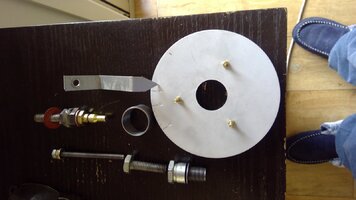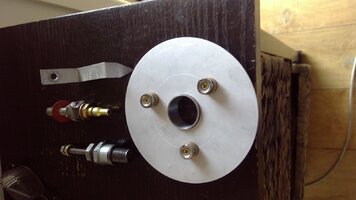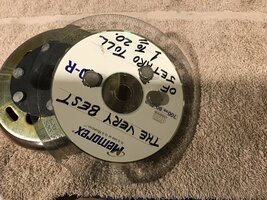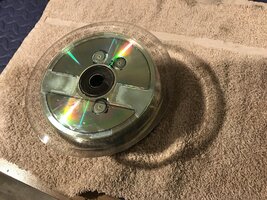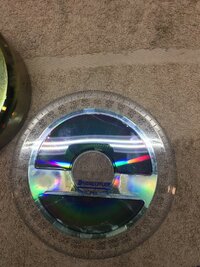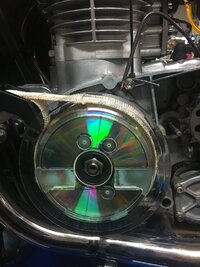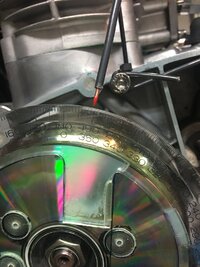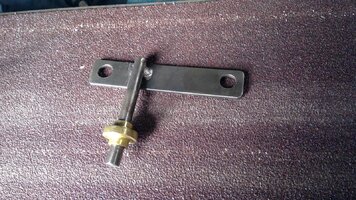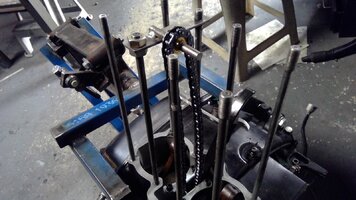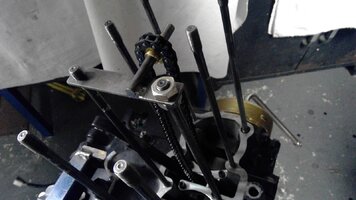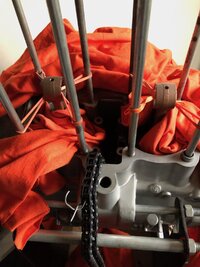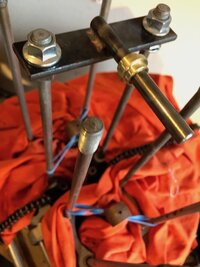I made these tools to help diagnose the problem with my 74 TX 650.
I made up a TDC finder by tapping a stripped plug, inserting a 10mm bolt and tapping that for a long M6 bolt. Next I made a degree wheel and pointer to check the TDC marks I made on the PMA rotor. The degree wheel has 5 degree marks from TDC to 40 degrees before. It's held on the rotor by rare earth magnets and centred using the short tube which is a tight fit in the central hole and around the socket, when centred the tube is removed to allow for some socket wriggle. The pointer is attached to the crankcase.
The screw in fitting was screwed into the modified plug, then screwed into the plug hole and connected to the compressor. And lo and behold the valves were leaking. I've always replaced guides and ground valves myself. The one and only time I've ever trusted this work to someone else, a local bike mechanic in this case and he let me down. This is why I prefer to do these things myself. Never trust a tradesman.
As it turned out, my TDC marks on the rotor were correct, so that'll be the last time I use the TDC finder. I guess.
I made up a TDC finder by tapping a stripped plug, inserting a 10mm bolt and tapping that for a long M6 bolt. Next I made a degree wheel and pointer to check the TDC marks I made on the PMA rotor. The degree wheel has 5 degree marks from TDC to 40 degrees before. It's held on the rotor by rare earth magnets and centred using the short tube which is a tight fit in the central hole and around the socket, when centred the tube is removed to allow for some socket wriggle. The pointer is attached to the crankcase.
The screw in fitting was screwed into the modified plug, then screwed into the plug hole and connected to the compressor. And lo and behold the valves were leaking. I've always replaced guides and ground valves myself. The one and only time I've ever trusted this work to someone else, a local bike mechanic in this case and he let me down. This is why I prefer to do these things myself. Never trust a tradesman.
As it turned out, my TDC marks on the rotor were correct, so that'll be the last time I use the TDC finder. I guess.

